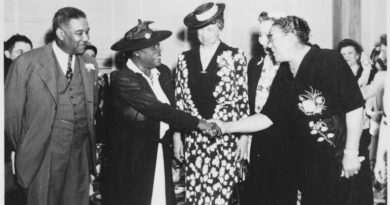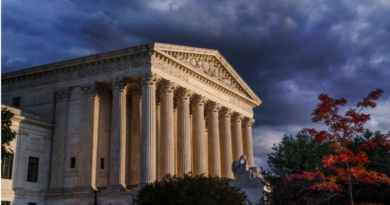Racism in the US workplace towards minorities

Laws against employment discrimination aim to stop businesses from treating employees unfairly on the basis of race, sex, sexual orientation, religion, national origin, physical handicap, and age[1, 2]. Bias in hiring, promotion, job assignment, termination, remuneration, retribution, and different forms of harassment are examples of discriminatory behaviors. Federal and state statutes make up the majority of the laws governing job discrimination. The United States Constitution and several state constitutions offer further protection when the employer is a government entity or when the government has taken major actions to encourage the employer’s discriminating conduct [3, 4].
The United States Constitution’s Fifth and Fourteenth Amendments place restrictions on the ability of the federal and state governments to discriminate. According to the Fifth Amendment, no one shall be deprived of “life, liberty, or property” without first receiving due process of law from the federal government. It also includes a subliminal promise that everyone will have equal protection under the law [5, 6]. State violations of a person’s right to due process and equal protection are expressly forbidden under the Fourteenth Amendment. The right to equal protection limits state and federal governments’ ability to discriminate in their hiring practices by treating current or former workers or job candidates differently due to membership in a group (such as race or sex). Employees must be given a fair procedure before being fired if the dismissal has anything to do with a “liberty” (such as the right to free expression) or property interest. The constitutions of certain states may also provide protection from job discrimination. Although there are an increasing number of federal and state legislation that apply to the private sector, the Constitution does not specifically prohibit discrimination in it [7, 8].
Laws against Discrimination in the Workplace
The Fair Labor Standards Act was modified by the Equal Pay Act, which Congress approved in 1963. Employers and unions are prohibited under the Equal Pay Act from paying employees differently depending on their sex. Other discriminatory employment practices are not prohibited by it [9, 10]. It states that employees should get equal remuneration for labor that is completed with “equivalent competence, effort, and responsibility” under “same working circumstances.” Employees involved in some kind of interstate commerce are covered by the Fair Labor Standards Act, as are all employees of an employer if the business as a whole engages in a substantial amount of interstate trade [11-13].
Many additional facets of the job relationship are proscribed by Title VII of the Civil Rights Act of 1964 against discrimination. It is applicable to the majority of employers conducting interstate business with more than 15 workers, labor unions, and employment agencies. Discrimination based on race, color, religion, sex, or national origin is illegal under the law. Sex involves being pregnant, giving birth, or experiencing associated medical complications. Employers are prohibited from discriminating when it comes to hiring, firing, compensation, or offering the terms, conditions, and privileges of work. When recruiting or referring candidates, employment agencies are not permitted to discriminate. The Act forbids labor organizations from classifying members or union categories based on national origin, race, gender, or any other characteristic [14, 15].
The American with Disabilities Act of 1990, the Rehabilitation Act of 1973, the Nineteenth Century Civil Rights Acts, as revised in 1993, guarantee that all people have equal rights under the law and specify the damages that can be sought by complainants in cases brought under these laws [16, 17].
Employers are not allowed to discriminate against employees based on their age under the Age Discrimination in Employment Act (ADEA). Employees between the ages of 40 and 65 are protected from the prohibited behaviors, which closely resemble those described in Title VII. There are clear regulations for benefit, pension, and retirement schemes in the ADEA. The U.S. Supreme Court explained the legislation in three different ways during the 2007–2008 term. First, claims for disparate effects made under the ADEA now need to show that the plan or scheme that is alleged to have caused the unequal impact was motivated by discrimination [18, 19]. A disparate effect argument asserts that despite a plan or strategy appearing to be neutral on the surface, it actually discriminates against older workers. In relation to this factor, the burden of evidence is with the plaintiff. Second, employees who submit an “Intake Questionnaire” to the Equal Employment Opportunity Commission (EEOC) for evaluation within 60 days of an alleged ADEA violation have complied with the statute of limitations requirement and may later file a lawsuit. There is no requirement that a formal charge be brought. Third, a plaintiff-employee can now file a private lawsuit for retaliation against federal employers under the ADEA. These private causes of action are only available to plaintiff-employees who have been subjected to reprisal as a result of their prior age discrimination claim [20-22].
With the use of affirmative action policies and the eradication of discrimination, the Rehabilitation Act seeks to “promote and increase job possibilities in the public and private sectors for disabled people.” The federal government’s agencies and businesses that get federal contracts for more than $2500 or financial aid are among the employers covered by the Act. As it relates to employment under federal contracts, Section 793 of the Act is enforced by the Department of Labor. Organizations receiving government help are covered by Section 794 of the Act, which is enforced by the Department of Justice [23, 24].
To end prejudice against people with disabilities, Congress passed the Americans with Disabilities Act in 1990. It forbids discrimination by for-profit businesses, federal, state, and municipal governments, labor unions, and employment agencies based on a physical or mental disability. The ADA forbids discrimination in a broader sense than Title VII does [25, 26].
The Equal Pay Act, Title VII, the Americans with Disabilities Act, portions of the Rehabilitation Act, and other acts are all interpreted and enforced by the EEOC. By virtue of Title VII, the Commission was created. Title 29 of the Code of Federal Regulations, Part 1614, includes its rules and regulations, and Section 2000e-5 of Title 42 contains its enforcement requirements. State laws also offer a great deal of protection against job discrimination, and some of them even give the same protection to companies that are not protected by the federal regulations that they are. Groups not covered by federal laws are protected by other statutes. People who are doing civil or familial obligations outside of their typical work are protected by a variety of state legislation. The Civil Rights Act of 1991 (CRA), approved by Congress in 1991, revised Section 1981 of the United States Code and overturned a number of Supreme Court rulings that had made it challenging for employees to win claims of employment discrimination. In cases of deliberate discrimination, the 1981 Act stipulates the necessary components for proving a disparate effect claim and authorizes a jury to impose both compensatory and punitive damages. Additionally, the 1981 ruling was understood by the U.S. Supreme Court to indicate a private cause of action for allegations of racial retribution. According to a claim of race-based retribution, an employer has retaliated against an employee for earlier reporting racial discrimination [27, 28].
According to the Uniform Services Employment and Reemployment Rights Act (USERRA), no employer, whether public or private, is allowed to reject a job applicant because of their past, present, or future military duties. Mining companies are not allowed to discriminate against miners who have “black lung” according to the Black Lung Act (pneumoconiosis) [29, 30]. The EOCC is responsible for enforcing the Genetic Information Nondiscrimination Act of 2008, which outlaw’s discrimination based on genetic information [31, 32].
Workers have the opportunity to take time off work (unpaid) to care for a newborn or newly adopted child, or to take care of a sick family member, according to the Family and Medical Leave Act. The Lilly Ledbetter Fair Pay Act of 2009 extended the window of opportunity for an employee to file a lawsuit by making it clear that each time compensation is paid in accordance with a discriminatory compensation decision or other practice that is illegal, it qualifies as a discriminatory compensation decision or practice that is unlawful [33, 34].
The Don’t Ask, Don’t Tell Repeal Act of 2010 made it possible for Americans who identify as openly homosexual, lesbian, or bisexual to serve in the military forces without facing any prejudice. In the case of United States v. Windsor, the Supreme Court ruled that the Defense of Marriage Act’s definitions of “marriage” and “spouse,” which were restricted to heterosexual partnerships, were unconstitutional. This decision allowed same-sex couples to be eligible for government benefits [35-37].
Summery
The purpose of laws against employment discrimination is to prevent companies from treating employees unjustly because of their race, sex, sexual orientation, religion, national origin, physical disability, or age. Discriminatory practices include, for example, bias in hiring, promotion, work assignment, termination, compensation, retaliation, and various types of harassment. The majority of the laws against job discrimination are included in federal and state statutes. In 1963, Congress passed the Equal Pay Act, which made changes to the Fair Labor Standards Act. Employers are not permitted to discriminate on the basis of race, color, religion, sex, or national origin under Title VII of the Civil Rights Act of 1964.
The age Discrimination in Employment Act prohibits employers from treating workers unfairly depending on their age (ADEA). Employees who are 40 to 65 years old are shielded from the forbidden actions. During the 2007–2008 term, the U.S. Supreme Court provided three alternative justifications for the statute. The Rehabilitation Act aims to “promote and improve career opportunities for disadvantaged individuals in the public and private sectors.” Employers covered by the Act include departments, agencies, and companies that receive financial help from the federal government or contracts worth more than $2,500.
These private causes of action are only open to plaintiff-employees who have suffered retaliation as a result of their earlier age discrimination claim. The Civil Rights Act of 1964’s Title VII was interpreted by the U.S. Supreme Court to imply a private cause of action for claims of racial retaliation. In instances of intentional discrimination, the 1981 Act specifies the elements required to establish a disparate impact claim and permits a jury to award both compensatory and punitive damages. A claim of racial retaliation contends that an employer punished an employee for previously reporting racial discrimination.
References
[1] P. S. Karlan and G. Rutherglen, “Disabilities, discrimination, and reasonable accommodation,” DUke lJ, vol. 46, p. 1, 1996.
[2] J. R. Sternlight, “In search of the best procedure for enforcing employment discrimination laws: a comparative analysis,” Tul. L. Rev., vol. 78, p. 1401, 2003.
[3] E. Wald, “A primer on diversity, discrimination, and equality in the legal profession or who is responsible for pursuing diversity and why,” Geo. J. Legal Ethics, vol. 24, p. 1079, 2011.
[4] V. R. Johnson, “Ethics in Government at the Local Level,” Seton Hall L. Rev., vol. 36, p. 715, 2005.
[5] S. F. Williams, “Liberty in the Due Process Clauses of the Fifth and Fourteenth Amendments: The Framers’ Intentions,” U. Colo. L. Rev., vol. 53, p. 117, 1981.
[6] C. Warren, “The New Liberty Under the Fourteenth Amendment,” Harv. L. Rev., vol. 39, p. 431, 1925.
[7] P. S. Karlan, “Equal Protection, Due Process, and the Stereoscopic Fourteenth Amendment,” McGeorge L. Rev., vol. 33, p. 473, 2001.
[8] J. Tussman and J. TenBroek, “The equal protection of the laws,” Calif. L. Rev., vol. 37, p. 341, 1948.
[9] L. Kanowitz, “Sex-based discrimination in American law III: Title VII of the 1964 Civil Rights Act and the Equal Pay Act of 1963,” Hastings LJ, vol. 20, p. 305, 1968.
[10] T. E. Murphy, “Female Wage Discrimination: A Study of the Equal Pay Act 1963-1970,” U. Cin. L. Rev., vol. 39, p. 615, 1970.
[11] F. Moccio, Live wire: Women and brotherhood in the electrical industry. Temple University Press, 2010.
[12] L. A. DiMatteo, K. Dosanjh, P. L. Frantz, and P. Bowal, “The Doha Declaration and Beyond: giving a voice to non-trade concerns within the WTO trade regime,” Vand. J. Transnat’l L., vol. 36, p. 95, 2003.
[13] E. Karbassioon, An analysis of the effects of aging population upon labor mobility in the United States. The University of Nebraska-Lincoln, 1981.
[14] R. S. Miller Jr, “Sex discrimination and title VII of the Civil Rights Act of 1964,” Minn. L. Rev., vol. 51, p. 877, 1966.
[15] R. K. Berg, “Equal employment opportunity under the civil rights act of 1964,” Brook. L. Rev., vol. 31, p. 62, 1964.
[16] D. Pfeiffer, “Overview of the disability movement: History, legislative record, and political implications,” Policy Studies Journal, vol. 21, no. 4, pp. 724-734, 1993.
[17] D. M. Engel and F. W. Munger, Rights of inclusion: Law and identity in the life stories of Americans with disabilities. University of Chicago Press, 2003.
[18] D. Neumark, “The Age Discrimination in Employment Act and the challenge of population aging,” Research on Aging, vol. 31, no. 1, pp. 41-68, 2009.
[19] B. L. Bessey and S. M. Ananda, “Age discrimination in employment: An interdisciplinary review of the ADEA,” Research on Aging, vol. 13, no. 4, pp. 413-457, 1991.
[20] T. J. Maurer and N. E. Rafuse, “Learning, not litigating: Managing employee development and avoiding claims of age discrimination,” Academy of Management Perspectives, vol. 15, no. 4, pp. 110-121, 2001.
[21] H. L. Sterns and S. M. Miklos, “The aging worker in a changing environment: Organizational and individual issues,” Journal of vocational behavior, vol. 47, no. 3, pp. 248-268, 1995.
[22] S. G. Rogelberg, Encyclopedia of industrial and organizational psychology. Sage, 2007.
[23] S. C. Selden, “A solution in search of a problem? Discrimination, affirmative action, and the new public service,” Public Administration Review, vol. 66, no. 6, pp. 911-923, 2006.
[24] C. Bacchi, “Policy and discourse: challenging the construction of affirmative action as preferential treatment,” Journal of European Public Policy, vol. 11, no. 1, pp. 128-146, 2004.
[25] J. V. Switzer, Disabled rights: American disability policy and the fight for equality. Georgetown University Press, 2003.
[26] M. C. Weber, “Beyond the Americans with Disabilities Act: A National Employment Policy for People with Disabilities,” Buff. L. Rev., vol. 46, p. 123, 1998.
[27] D. S. Cohen, “The stubborn persistence of sex segregation,” Colum. J. Gender & L., vol. 20, p. 51, 2011.
[28] M. I. Kozinets, “The Americans With Disabilities Act: Does the ADA Protect a Person with the Chronic Fatigue Syndrome from Employment Discrimination,” Hofstra Lab. LJ, vol. 13, p. 139, 1995.
[29] G. L. Tidwell, D. A. Rice, and G. Kropkowski, “Employer and employee obligations and rights under the Uniformed Services Employment and Reemployment Rights Act,” Business Horizons, vol. 52, no. 3, pp. 243-250, 2009.
[30] J. S. Klein, N. J. Pappas, and M. I. Herman, “The userra: Workers’ employment rights following military service,” Cornell Hotel and Restaurant Administration Quarterly, vol. 43, no. 5, pp. 75-83, 2002.
[31] A. E. Prince and M. I. Roche, “Genetic information, non-discrimination, and privacy protections in genetic counseling practice,” Journal of genetic counseling, vol. 23, no. 6, pp. 891-902, 2014.
[32] J. L. Roberts, “Preempting discrimination: Lessons from the genetic information nondiscrimination act,” Vand. L. Rev., vol. 63, p. 439, 2010.
[33] L. DeRigne, P. Stoddard-Dare, and L. Quinn, “Workers without paid sick leave less likely to take time off for illness or injury compared to those with paid sick leave,” Health Affairs, vol. 35, no. 3, pp. 520-527, 2016.
[34] L. Golden, “Flexible work schedules: Which workers get them?,” American Behavioral Scientist, vol. 44, no. 7, pp. 1157-1178, 2001.
[35] C. A. Rimmerman, The lesbian and gay movements: Assimilation or liberation? Routledge, 2018.
[36] S. Dolamore and L. A. Naylor, “Providing solutions to LGBT homeless youth: Lessons from Baltimore’s youth empowered society,” Public Integrity, vol. 20, no. 6, pp. 595-610, 2018.
[37] B. Sears and C. Mallory, Employment discrimination against LGBT people: Existence and impact. 2014.


